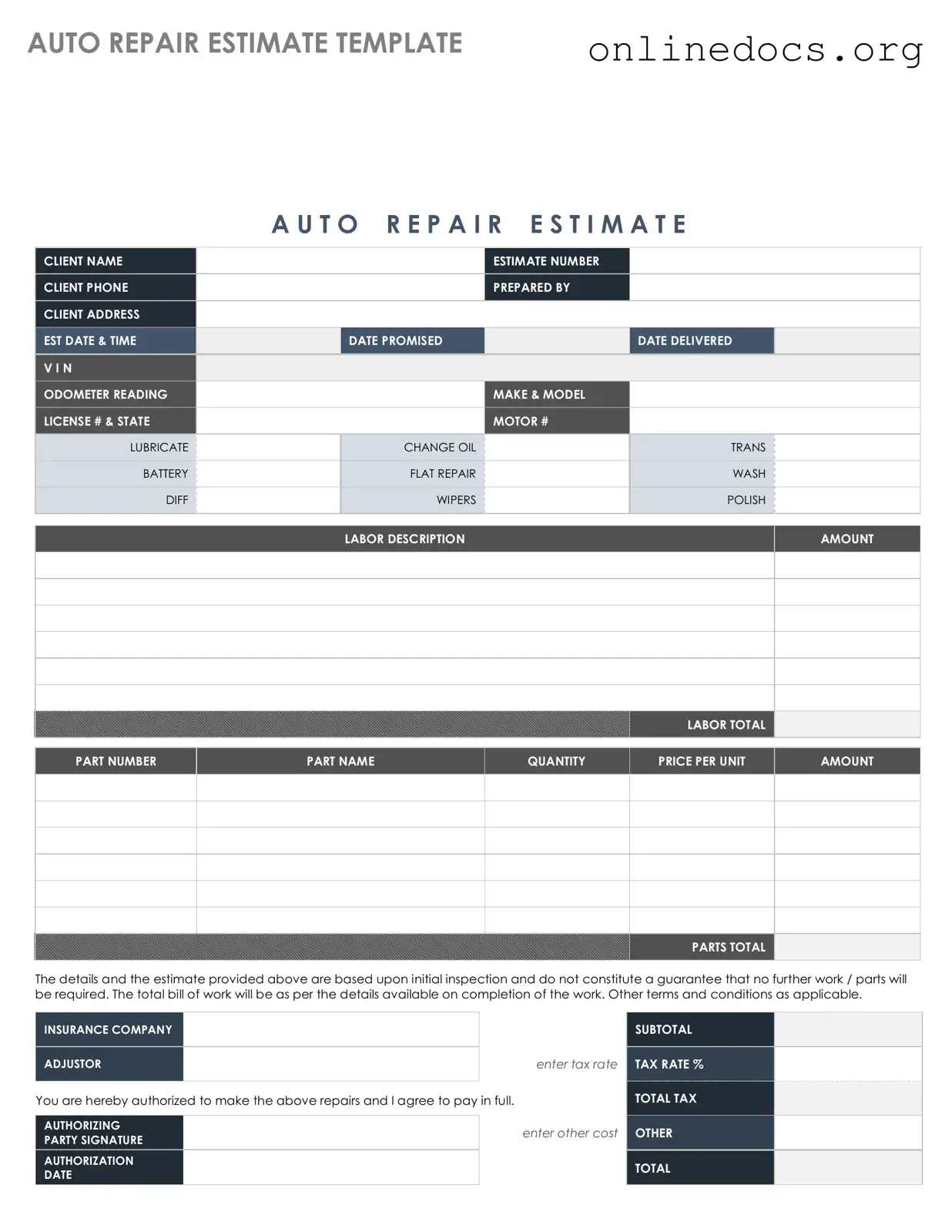The Auto Repair Estimate form shares similarities with the Invoice form. Both documents provide a detailed breakdown of services rendered and associated costs. An invoice typically follows the completion of services, while an estimate is presented before work begins. Both documents serve to inform the customer about financial expectations and can be used for record-keeping and budgeting purposes.
The Work Order form is another document akin to the Auto Repair Estimate. A work order outlines specific tasks to be performed on a vehicle, often including parts and labor costs. While an estimate is a preliminary cost projection, a work order serves as a directive for the repair shop to carry out the agreed-upon services. Both documents help ensure clarity in communication between the service provider and the customer.
The Repair Authorization form is also similar to the Auto Repair Estimate. This document is used to obtain customer approval before any repairs are made. It often references the estimate to confirm the costs and services agreed upon. The repair authorization ensures that the customer is aware of and consents to the proposed work, protecting both parties in the transaction.
Understanding the various documents involved in the rental process is crucial for both landlords and tenants. One essential document is the California Residential Lease Agreement, which outlines the terms of the rental arrangement and protects the rights of both parties. For more detailed information on how to effectively draft this crucial agreement, you can visit californiapdfforms.com/residential-lease-agreement-form/.
The Service Agreement form shares features with the Auto Repair Estimate as well. A service agreement outlines the terms and conditions of the repair services, including costs and timelines. While an estimate provides a cost projection, a service agreement formalizes the relationship between the customer and the repair shop, ensuring that both parties understand their obligations.
The Vehicle Inspection Report is another document that resembles the Auto Repair Estimate. This report details the condition of a vehicle and may include recommendations for repairs. While an estimate provides a cost for those repairs, the inspection report focuses on the vehicle's current state. Both documents work together to inform the customer about necessary actions and associated expenses.
The Warranty Claim form also shares characteristics with the Auto Repair Estimate. This document is used to request reimbursement for repairs covered under a warranty. Similar to an estimate, it details the services performed and associated costs. Both documents are important for tracking expenses and ensuring that customers receive the benefits of their warranty agreements.
Lastly, the Customer Feedback form can be considered similar to the Auto Repair Estimate. While the estimate provides a cost projection before services are rendered, the feedback form collects customer opinions after the service is completed. Both documents are crucial for assessing customer satisfaction and improving service quality in the auto repair industry.
